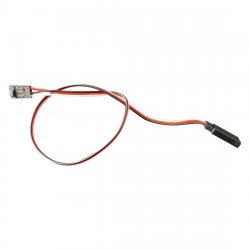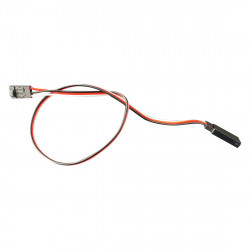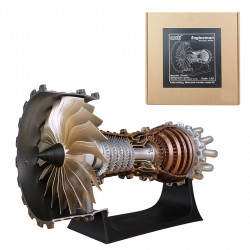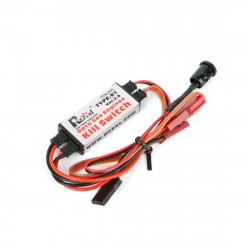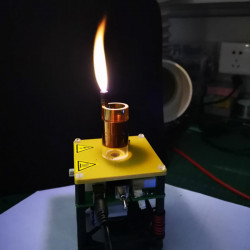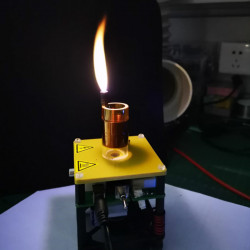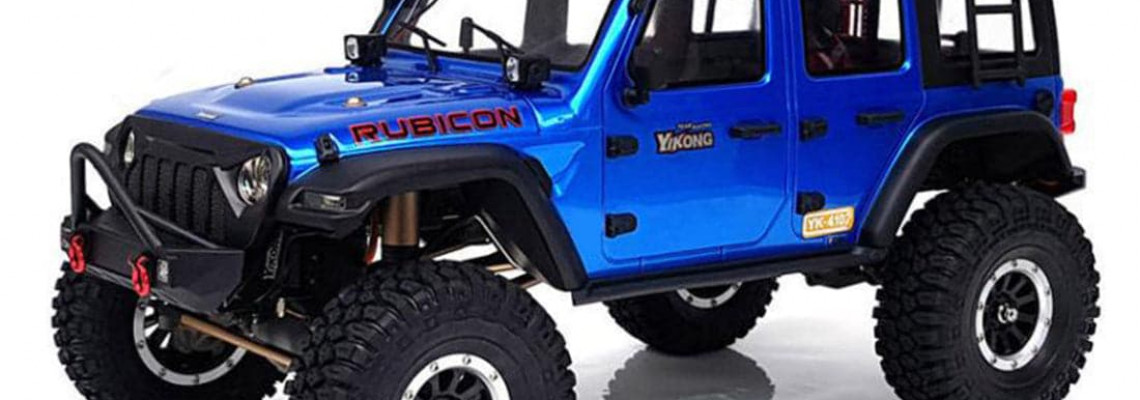
How to Inspect and Replace RC Car Tires and Wheels
A good set of tires is the foundation of any thrilling remote-controlled (RC) car racing.
That's correct; you won't have a good experience if you don't buy the proper tires for your car and the terrain you're driving over, regardless of what engine you're using, how light your chassis is, or what battery is charging the lot.
Make sure you do it correctly.
As an RC enthusiast, picture yourself racing your vehicle over racetracks, sandy beaches, or rough terrain. The car's handling, speed, and overall performance all contribute to the pleasure.
And you know what? The proper tires and wheels greatly influence these characteristics.
This guide will reveal the key to improving the performance of your remote-controlled car through routine tire and wheel replacement and inspection—all the information you require to make the best choices and enjoy the most excellent RC driving experience imaginable.
Let's get those tires rolling, so hop in!
Understanding RC Car Tire Basics
The performance of your car is determined by its tires, which are more than just rubber on wheels. Here's why knowing the fundamentals of tires is so important:
- Tire Types and Textures: Your RC car's tire composition, which ranges from knobby tires for off-road traction to slicks for smooth roads, can significantly affect your vehicle's speed, grip, and control.
- Wheel Types: Wheel construction varies widely, ranging from aluminum, which provides durability and heat resistance, to plastic, which is lightweight. The wheel material selection impacts the stability and weight distribution of your RC car.
- Overall Handling: Wheels and tires interact to influence handling. When the two are perfectly matched, the vehicle will perform better under various driving circumstances and have superior control.
Regular Inspections: The Key to Long-lasting RC Car Tires
Taking care of your remote-controlled car is like a labor of love! The key to prolonging the life of your RC tires and wheels is to do routine inspections. Let's dissect it:
- Inspection Process: Gain an acute sense of detail. Examining the tire and wheel for any defects, tread wear, or punctures is a brilliant place to start.
- Site the Signs: It's critical to recognize wear and tear. Deep cracks, thinning, irregular wear patterns, and distorted treads all indicate that something needs to be done.
- To Repair or Replace?: Tire damage can be fixed with simple fixes or replaced entirely, depending on the extent of the damage. Aim for a balance between keeping performance at its best and being cost-effective.
Tools of the Trade: What You'll Need for Inspection and Replacement
For your RC car tires to be inspected and replaced effectively, you must have the appropriate tools:
- Necessary Tools: Prepare a soft brush for cleaning, tire adhesive for reattaching, and a tire removal tool or wrench that fits the nut size of your wheel.
- Optional Tools: Tire traction compounds and tire balance instruments can make your maintenance procedure more accurate and straightforward.
- Proper Storage: To ensure a seamless and effective tire inspection and replacement process, keep your tools accessible and organized with a toolbox or tool bag.
Step-by-Step Guide to Inspecting RC Car Tires
A thorough examination guarantees that your tires are always prepared for use. Take these actions for a thorough examination:
- Tread Depth and Patterns: Start by visually inspecting the tread depth or using a tread gauge. The pattern needs to be clear and sufficiently deep to manage the planned terrain.
- Sidewall Health: Pay particular attention to the sidewalls for any indications of damage, such as cuts, punctures, or bulges, as these could jeopardize the tire's integrity.
- Abnormal Wear: Watch for uneven wear, which may indicate suspension or alignment problems. If left unchecked, such wear can impair the performance of your RC car and necessitate regular replacements.
Removing Old Tires and Wheels Like a Pro
You may avoid needless damage and save time and work by becoming proficient at removing old tires and wheels. To do it like a pro, follow these steps:
- Safe Removal Techniques: To begin, use a fitting wrench to release the wheel nuts. To prevent deformation, remove the tire gradually while maintaining consistent pressure around the edges.
- Handling Difficult Tires: To remove resistant tires without damaging the wheels, use a tire removal tool or a little amount of heat (be careful not to burn the rubber).
- Preparing Wheel Hub: After the tires are removed, clean and prepare the wheel hub for the new tires to be attached. For optimal adhesion, sweep away any leftover glue residue and ensure the surface is dust-free and smooth.
How to Choose the Right RC Car Tires and Wheels
Performance depends on choosing the proper RC car tires and wheels. When purchasing new ones, keep the following things in mind:
- Tire compound: Impacts durability and grip. Although they wear out more quickly, softer tires offer more excellent traction. Although they last longer, hard tires provide less traction.
- Tread pattern: Depending on the surface, different patterns perform better. To choose the best track, understand it.
- Tire size: Smaller tires provide better control, while larger tires allow for faster speeds.
- Wheel offset: Greater offset improves stability by providing a wider stance. However, it causes more tire wear.
Oh, and don't forget to take the road conditions into account. Changing to a better set of tires will have a significant impact, even if you're changing the terrain every hour.
Here's a little lowdown of what you need to know:
- Asphalt: Search for slicks or street treads that have a soft composition.
- Dirt: Select a tire with an aggressive tread pattern that is sturdy.
- Grass: For better grip, choose big, wide tires with tall treads.
- Rock: Choose tires with a firm tread pattern, soft compound tires, and excellent grip.
Balancing Performance Needs with Durability
- Use: Although racing tires perform better, they degrade more quickly. Basins provide durability at a minor performance expense.
- Budget: Better performance is frequently more expensive. Think about the frequency of tire replacements.
The Replacement Process: Mounting New Tires and Wheels
When new tires and wheels are attached, the tire and wheel replacement process is complete. This is how to do it perfectly:
- Attaching Tires to Wheels: Start by lightly coating the bead region of the wheel with tire glue. Align the tire with the wheel after that. While the adhesive cures, carefully press the tire and wheel together. This procedure should be repeated all the way around the wheel.
- Fitting Wheels on Axles: Make sure the holes line up by aligning the wheel hub with the axle. The wheel nut should be inserted and tightened with a fitting wrench after alignment.
- Securing the Tires: Make one last check. Verify that all of the nuts are snug, the tires are mounted securely on the wheels, and the wheels spin freely. Your remote-controlled vehicle is now prepared to rule any terrain.
Post-Replacement Tips for Optimal Performance
Maintaining your RC car doesn't end when you install new wheels.
- Testing After Replacement: Test the RC car in a controlled environment as soon as possible after replacement. Check for precise steering responses, strong grip, and even motion to make sure everything is fitted properly.
- First Drive on New Tires: When driving the tire for the first time, go slowly. As you adjust to the car's potentially changed handling, this aids the tires in gaining traction.
- Ongoing Maintenance: Check the alignment, clean the tires on a regular basis, and evaluate the wear pattern. Additionally, proper storage can prolong the life of your tires. Never forget that prevention is always preferable to treatment!
Maintaining your remote-controlled vehicle requires ongoing education and practice, so keep trying new things and have fun!
Troubleshooting Common Issues After Replacements
There may be some glitches even after a flawless replacement. Here are some tips for resolving typical post-replacement problems:
- Addressing Alignment Problems: Inconsistent wear is a sign of alignment issues. Verify and correct the wheel alignment. Frequent tire adjustments can extend tire life and enhance driving.
- Solving Imbalanced Tires and Wheels: Your RC car may have unbalanced tires if it wobbles or shakes. To fix this, use a tire balance tool. Rebalancing the tires might occasionally fix this problem.
- Ensuring Proper Torque on Wheel Fasteners: Serious damage might result from a loose wheel. Verify that the wheels are tight and fastened to the axles. Your wheel will remain intact during your race if the wheel nut is properly torqued.
Conclusion
Are you prepared to improve your RC experience? Explore the fascinating world of V8engineforsale.com and a variety of RC vehicles, trucks, boats, quadcopters, drones, and intelligent robot toys that combine durability, performance, and speed to provide you with an adventure of a lifetime.
At V8engineforsale, we prioritize our customers' needs by offering excellent customer service and a smooth one-stop shopping experience. Take advantage of free shipping on orders over $88 and 100% secure payments.
Are you awaiting the ideal opportunity to add to your collection or begin your RC racing career? Now is the moment!
